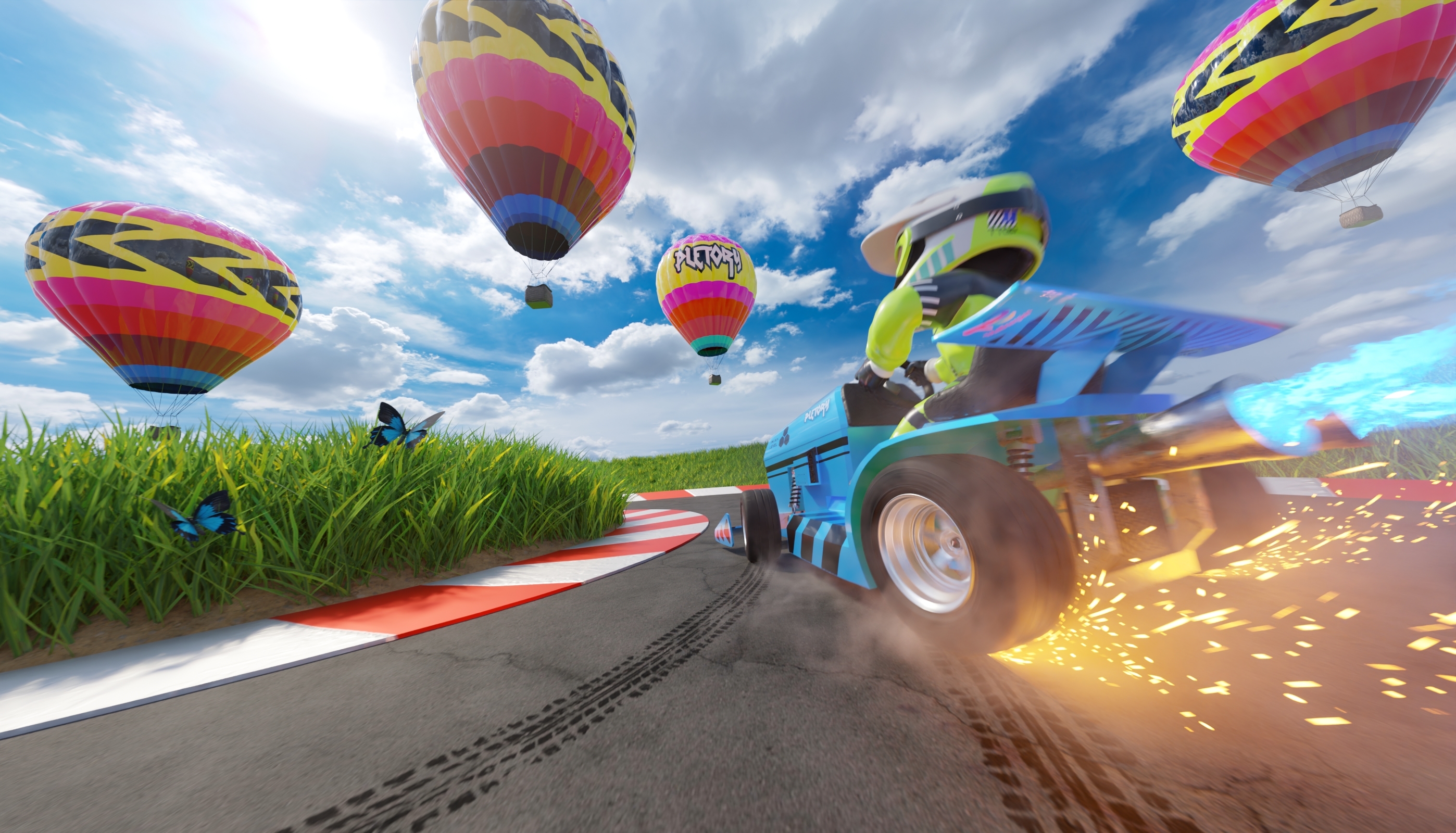
Content Creation: Latest Trends and the Rise of Virtual Content Creators
As the marketing landscape continues to evolve, it’s important for businesses and marketers to stay on top of the latest trends in content creation and influence marketing. In recent years, we have seen a significant rise in the use of virtual content creators, also known as virtual influencers. These digital avatars have taken the social media world by storm, and they show no signs of slowing down.
In this blog post, we’ll take a closer look at the latest trends in content creation and influence marketing, with a particular focus on virtual content creators. We’ll explore how these virtual characters are adapting to the changing landscape of digital marketing and how they are helping brands connect with their audiences in new and innovative ways.
The Growing Popularity of Influence Marketing
Influence marketing has become a critical component of many brands’ marketing strategies. With the rise of social media, influencers have become a powerful force in the world of marketing. These individuals have built up large followings on social media platforms, and they are often seen as trusted authorities in their respective niches and brands seek them to promote their products and services. This type of marketing involves partnering with individuals who have a significant following on social media platforms to promote a brand’s products to their audience.
The use of virtual influencers is just one of the latest trends in influence marketing. Brands are increasingly looking for new and innovative ways to connect with their audiences, and virtual influencers offer a unique opportunity to do just that. By working with virtual content creators, brands can tap into the growing popularity of social media influencers while also taking advantage of the latest advancements in digital technology.
Virtual characters used as influencers can be particularly effective in targeting the younger generations who are both web-native and grew up with these technologies. Both GenZ and Millennials are used to encountering such virtual characters in games and the media more broadly, so they are more in tune with the concept and are therefore more likely to respond positively to these campaigns.
The use of virtual characters in influencer marketing can also help brands to avoid some of the issues that can arise when working with human influencers. For instance, virtual characters can be available 24/7, and their behavior and actions can be controlled by the brand. Moreover, virtual characters do not have personal opinions or beliefs, making it easier for brands to maintain control over the messaging.
The Rise of Virtual Content Creators
Virtual content creators, or virtual influencers, are digital avatars that have been created using computer-generated imagery (CGI). These characters can range from realistic human avatars to fantastical creatures, and they are designed to look and act like real people. Virtual influencers have become increasingly popular on social media platforms like Instagram and YouTube, where they can be used to promote brands and products to their audiences.
One of the main advantages of using virtual content creators is that they are highly customizable. Brands can work with digital artists and CGI experts to create characters that fit their specific brand identity and target audience. Virtual influencers can also be programmed to behave in specific ways, allowing brands to craft highly targeted and effective marketing campaigns.
Another advantage of virtual influencers is that they are highly versatile. Unlike human influencers, virtual influencers don’t have to worry about issues like scheduling conflicts or travel restrictions. They can be programmed to post content at specific times, and they can be used to promote products and services across a wide range of industries.
The Use of Virtual Characters in Marketing
Virtual characters have become increasingly popular in marketing campaigns as they offer a unique way to represent a brand, product, or service. They can be created to have a distinct personality and look, making them stand out from other content creators. Moreover, these characters can perform actions and expressions that may not be possible for humans, making them useful in video production and animation.
Virtual characters in marketing campaigns are designed to be memorable and engaging. They provide a new level of creativity that traditional marketing may not achieve. For instance, a fictional virtual character can represent a brand or service, which helps to create a distinct identity for the product. This virtual character can also be used to narrate videos or be a part of an ad campaign, which can draw more attention to the brand.
The use of virtual characters can also help to build a community around the brand. By creating an immersive experience, the audience can connect with the brand on a personal level, increasing brand loyalty. Additionally, virtual characters can be used to create interactive content that can engage the audience and provide a unique user experience.
Overall, virtual characters offer a new way of approaching marketing campaigns. They can help brands to stand out and be memorable in a crowded market. By creating a unique identity, building a community, and providing an interactive user experience, virtual characters can play a significant role in the future of marketing.
Virtual Characters and the Latest Trends in Content Creation
So, how can virtual characters adapt to the latest trends in content creation? Let’s take a look at some of the current trends and how virtual characters can fit into them.
Interactive Content
Interactive content is becoming increasingly popular, particularly on social media platforms. This type of content encourages the viewer to engage with the content in some way, such as by answering a question or taking a quiz. Virtual characters can be used to create interactive content in a number of ways.
For example, a brand could create an interactive quiz that is hosted by a virtual character. The character could guide the viewer through the quiz and provide feedback based on their answers. This type of content can be both informative and entertaining, and can help to build brand awareness.
Short-Form Video
Short-form video, such as TikTok and Instagram Reels, has become incredibly popular in recent years. These videos are typically between 15 and 60 seconds long and are designed to be quickly consumed by the viewer. Virtual characters can be used to create short-form video content that is both visually appealing and entertaining.
Consider a brand creating a series of short videos featuring a virtual character that showcases their product or service in a unique way. These videos could be shared on social media platforms and could help to build brand awareness and drive engagement.
Live Streaming
Live streaming has become increasingly popular, particularly on platforms like Twitch and YouTube. Live streaming allows the viewer to interact with the content creator in real time, creating a sense of community and engagement. Virtual characters can be used to host live streams in a number of ways.
More specifically, a brand could create a live stream that is hosted by a virtual character. The character could interact with the audience and provide commentary on the content being shared. This type of content can be particularly effective for events, such as product launches or live performances.
Augmented Reality
Augmented reality, or AR, is becoming increasingly popular in the world of marketing. AR allows the viewer to interact with digital content in the real world, creating a unique and immersive experience. Virtual characters can be used to create AR content in a number of ways.
For instance, a brand could create an AR experience that is hosted by a virtual character. The character could guide the viewer through the experience and provide commentary on the content being shared. This type of content can be particularly effective for product demos or virtual tours.
How Virtual Characters are Adapting to the Latest Trends
As the world of marketing continues to evolve, virtual characters are adapting to keep pace with the latest trends. One of the biggest changes we’ve seen in recent years is the move toward more authentic and relatable content. Brands are no longer looking for perfectly polished and curated content. Instead, they want to connect with their audiences on a more personal and emotional level.
To adapt to this trend, virtual influencers are being designed to look and act more like real people. They are being given more realistic personalities and are being programmed to behave in more authentic ways. This allows them to connect with their audiences in a more meaningful way, and it helps brands create content that feels more genuine and relatable.
Another trend we’re seeing is the rise of virtual events and experiences. With the ongoing COVID-19 pandemic, many brands are looking for ways to connect with their audiences in a virtual environment. Virtual characters can play a key role in these experiences, providing a unique and engaging way for brands to connect with their audiences.
Conclusion
Virtual content creators and influence marketing are two of the most significant trends in digital marketing today. As the world of marketing continues to evolve, virtual characters are adapting to keep pace with the latest trends. By working with virtual influencers, brands can connect with their audiences in new and innovative ways, while also taking advantage of the latest advancements in digital technology. Whether you’re looking to promote a new product or build brand awareness, virtual influencers can help you achieve your marketing goals.
It’s important to remember that while virtual influencers offer many advantages over traditional influencers, they are not a replacement for human connections. Authenticity and relatability are still key factors in creating successful marketing campaigns, and brands should always strive to create content that resonates with their audiences on a personal level.
As we move into the future of marketing, we can expect to see even more advancements in virtual content creation and influence marketing. From augmented reality experiences to fully immersive virtual worlds, the possibilities are endless. By staying on top of the latest trends and embracing new technologies, brands can continue to create meaningful connections with their audiences and stay ahead of the competition.


